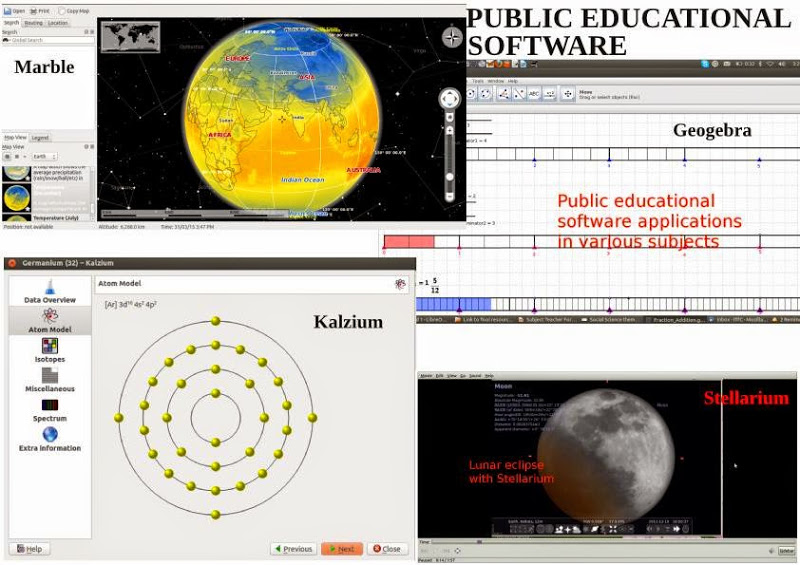
In this blog, Gurumurthy Kasinathan, the Director of IT for Change and ROER4D Sub-Project 5 Lead Researcher, focuses on the open content – open software link. Open infrastructure (open hardware) and open connectivity (‘net neutrality’) are not discussed here, though these are also key components.
I participated in the 2nd workshop of ROER4D in KOER” (Karnataka Open Educational Resources) project, this blog is more a reflection of a dilemma I have been having since I began working with the idea of OER from the Paris world conference on OER (June 2012).
The power of OER really comes from the digital nature of information. While printed materials can be replicated only at a cost, and the marginal costs of production do not decline dramatically, digital materials have almost nil marginal costs. Replication costs are trivial. Secondly, modifying and sharing printed material is a complex and non trivial task, while using modern powerful text editors to edit/revise/re-mix content in a document is technically quite simple. Not only can text can be easily edited using a ‘track change’ feature which allows multiple people to edit the same document and retain their ‘signature’, it can be shared back with the original author to decide what revisions to accept. Not only can text can be modified, images and links can be manipulated to revise and enhance digital documents, tasks not easily performable in the pre-digital era.
It is thus the nature of the digital that allows the idea of OER to be born and thrive.
However, OER are one part of the digital environment. OER are ‘content’, while ‘connectivity’ and ‘code’ are the other components of the digital environment, other than the ‘physical layer’ which is the hardware. Code here, stands for the software applications, which allow the creation and modification of digital content. Software applications are the brick and mortar of the digital environment and being digital themselves, can be shared at nil marginal costs and modified as well.
That OER have the potential to benefit society is really obvious, free sharing and enriching of information can certainly benefit all. However, an open digital ‘content’ environment, from a principle perspective cannot exist in a ‘closed code’ (proprietary software applications) environment. Software applications are the digital tools with which we create, revise and share digital content.
As I see it, the efforts to promote an ‘open content’ environment through OER is necessarily aligned with the efforts to promote a ‘free and open source software’ (FOSS) environment. In fact, the latter is a foundation for the former; without tools, there can be no outputs.
However, I find that the OER proponents rarely discuss this link, even imperative. “OER” normally are created using proprietary applications and in proprietary file formats (the popular Microsoft Office documents formats – .doc, .xls and .ppt are all proprietary). To my mind, this is an oxymoron!
It is true that there are application areas where we may not have robust FOSS applications, and the use of proprietary applications may become inevitable (such as complex qualitative research). This therefore may not be able to be seen as a binary – either we use only FOSS or only proprietary software, but as a spectrum of open – closed. Prof Cheryl Hodgkinson-Williams shared this notion in the ROER4D workshop, where we keep moving towards more and more free and open environments.
Open – Closed spectrum
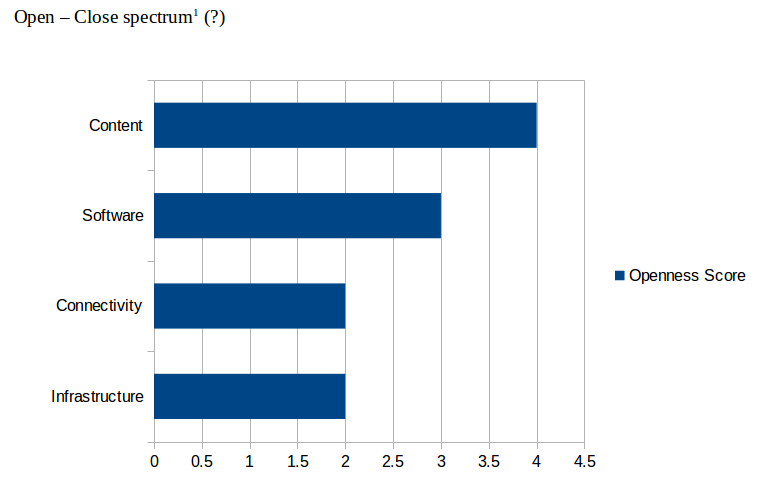
Fully Closed Fully Open
The more open one digital component is, the more it can support the others being open. Apart from the philosophical/ principled aspect mentioned earlier, this is also true from a pragmatic point of view. A FOSS environment enables the use of a variety of tools and creates an ‘application rich’ environment. In the KOER project, high school teachers use a wide variety of FOSS digital tools to create a variety of resources, such as:
- Text editors like LibreOffice writer to create and edit text documents.
- Image editors like GIMP to create and edit image documents
- Audio editors like Audacity to create and edit audio documents
- Video editors like Openshot to create and and edit video documents
- Concept mapping tools like FreeMind to create and edit concept maps
- PDF manipulation tools like PDFShuffler to manipulate PDF documents
- Educational applications such as Phet to create resources in different subjects (mathematics, geography, science respectively)
These resources are also shared on (freeware) platforms tools such as Google groups, Google photos and free platforms like Slideshare, Wiki and YouTube.
In a constrained environment of closed software, which is what we usually see (computer with Microsoft Windows operating system, Microsoft Office, Internet Explorer and Adobe Acrobat PDF reader), the user limits his/her imagination to the functionalities of these applications (‘What is it that I can do with the tools I have’), whereas in the FOSS environment, teachers often proceed from ‘What is it that I want to do, and what tool will I need for this task’, and search for the tool either in the Ubuntu Software centre repository in their desktop, or on the Web. Teachers have shared tools that they have discovered/identified with peers on their virtual forums.
My request to my fellow OER advocates is to broaden their efforts towards a ‘free and open digital environment’ in which the platforms, connectivity, tools and content are all available for all of us to use, retain, re-use, revise and re-distribute. And this is something I have found sorely missing in OER conferences/ events, including the Open Education Global Conference. I hope OER advocates will bring in advocacy for FOSS tools as a part of their work and their own practice as well!
*The original quote reads “The end is inherent in the means” by Mohandas Karamchand Gandhi
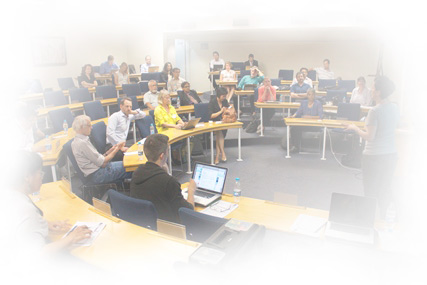

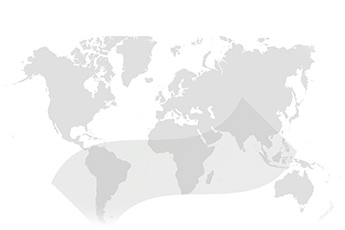

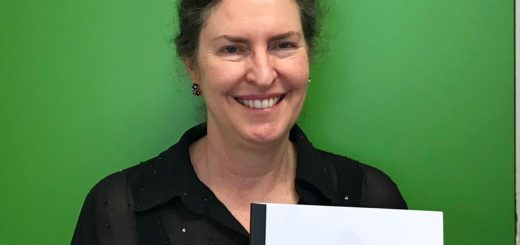

[…] eerste bericht is getiteld “The means are the ends”*: The alignment between OER and FOSS en is kort samen te vatten als “denk toch ook aan ons”. Het is de verzuchting vanuit […]